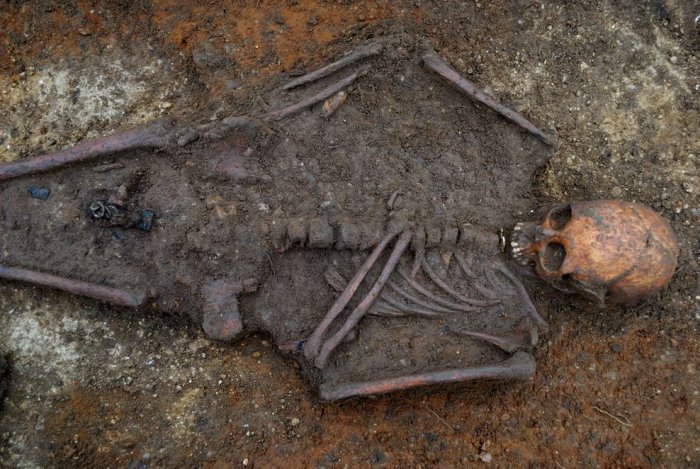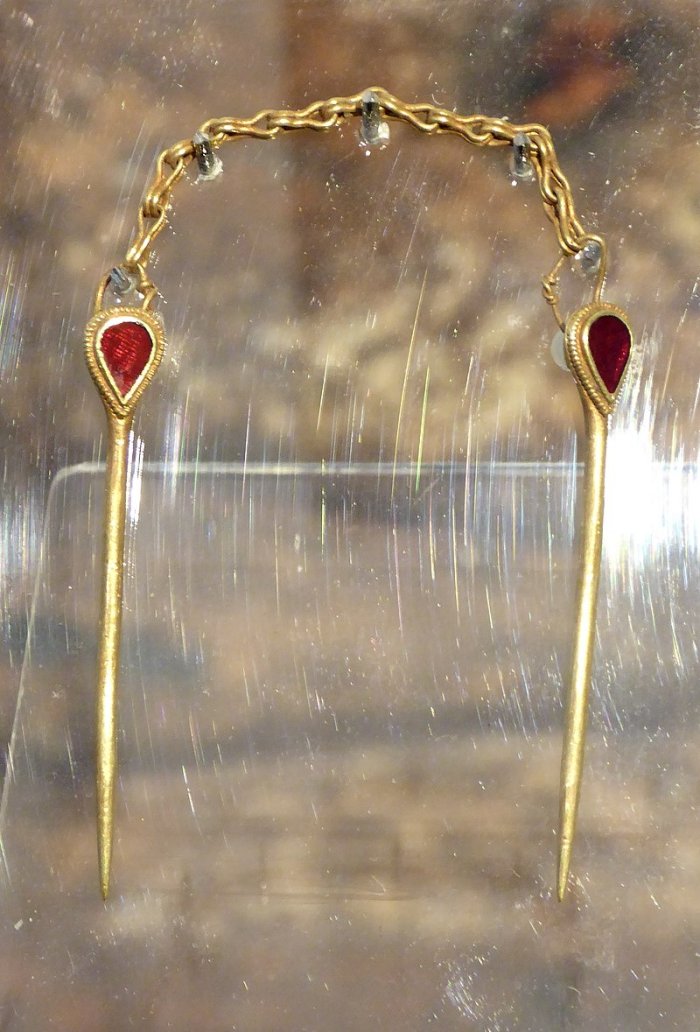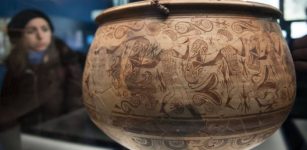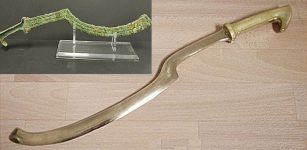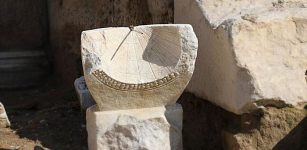Magnificent Trumpington Cross And Highly Unusual Anglo-Saxon ‘Bed Burial’ In Cambridge Offer Unique Insight Into English Christianity
Conny Waters - AncientPages.com - About 1,300 years ago, a teenage girl was buried on the outskirts of Cambridge, UK. She received a highly unusual 'bed burial,' and a superb cross was placed along her body.
Credit: University of Cambridge
Who the girl remained a mystery, but the precious gold cross she was buried with – offers unique insights into the origins of English Christianity.
The 3.5cm diameter Trumpington Cross is made of gold and garnet. Researchers think it comes from one of the earliest Christian burials in Britain, probably dating between AD650-AD680.
"The cross is made from gold, inlaid with garnets. The garnets probably come from Asia. It is exquisitely made as the garnets are backed with foil to make them shine and catch the light. Gold always amazes me as it doesn’t change – the cross came out of the ground pretty much as it looks now (once some of the mud had been removed)", according to Jody Joy, .
"The cross is tiny – only 34mm in diameter. It has four loops at the back and was possibly worn at the chest, sewn directly onto clothing or suspended as a pendant from one of the loops. The gold and garnet pins also found in the grave were probably used to secure a veil to the costume. Although small, the cross would have certainly caught the eye. Unlike many other Anglo-Saxon jewellery, which can be large and brash, the cross is small and subtle but no less impressive.
Credit: University of Cambridge
Because the earliest Anglo-Saxon converts to Christianity were from noble families, with its adoption filtering down through the social hierarchy, the teenager buried at Trumpington Meadows was undoubted of aristocratic or even royal status.
She was buried with treasured possessions, including gold and garnet pins, an iron knife, glass beads, and a chain that would have hung off her belt. It was the unexpected presence of the cross, which marks the teenage girl as an early convert to Christianity – which most excited Cambridge University archaeologists.
The cross would have made a spectacular dress accessory, fashioned from gold and intricately set with cut garnets. The gold and garnet construction was reserved for the highest levels of society, posing the intriguing question about the teenage girl's position in her settlement and the wider region.
Credit: University of Cambridge
The bed consisted of a wooden frame held together by metal brackets, with different pieces of looped metal fixing the cross-slats to create a suspended bed base, similar to modern beds, but with a straw mattress.
The body was placed on the bed, probably when it was already in the grave.
Only a handful of Anglo-Saxon bed burials have ever been discovered in the UK – and the pectoral cross is only the fifth of its type found to date.
The 7th-century Trumpington Cross was discovered in 2011 and is currently on display at Cambridge University's Museum of Archaeology and Anthropology.
Gold and garnet pins from the burial. Image credit: Ethan Doyle White - CC BY-SA 4.0
"Only five other similar crosses have been found in Britain so it is a very rare object. The ones that are known were found in association with high status women and in one instance a bishop, so the highest levels of society," Mr Jody Joy added.
The use of gold and garnet to make the cross is similar to objects found in the (earlier) Sutton Hoo burial and can therefore be linked to aristocracy not just a local elite. In a sense it was surprising to find the cross in a grave at Trumpington, which excavations showed was a typical Anglo-Saxon settlement for the time.
Written by Conny Waters - AncientPages.com Staff Writer
Updated on October 9, 2022
Expand for references

